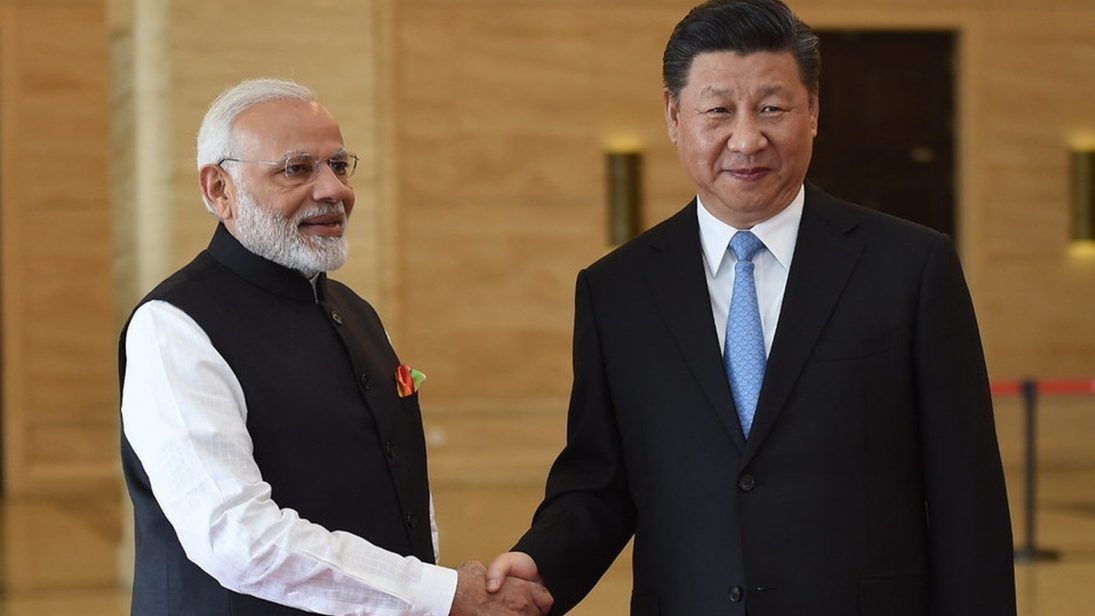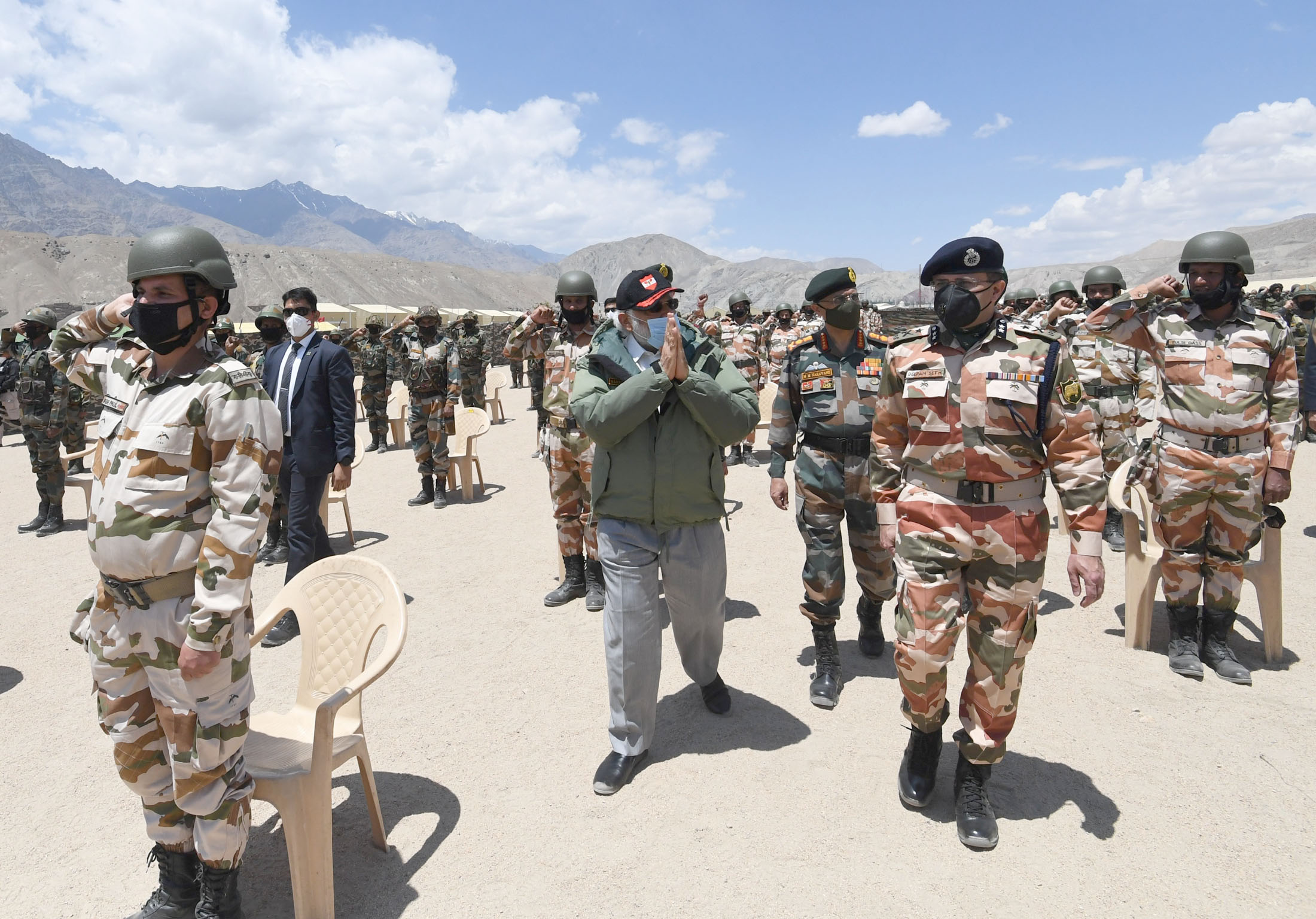
The latest SAV series India-China: 70 Years of Diplomatic Relations has been released on the cusp of what may come to be remembered as one of the most important turning points in the history of modern China-India relations. It is appropriate that such a comprehensive series, touching upon India-China economic relations, diplomatic history, maritime competition, airpower and the military balance, as well as Pakistan’s view of the relationship, has been published at this time, allowing us to take stock of the relationship as it transitions from one set of possibilities to perhaps quite another trajectory altogether.
Violent clashes in the Galwan Valley on June 15 have shaken the bilateral relationship. Whether this event proves to be a historic inflection point not only in Beijing-New Delhi ties but also for the region depends on the deeper context of the relationship that the authors in this series explore. The five essays in this series provide the historical and strategic background for the events at Galwan, and indicate why the first instance of bloodshed between China and India in 45 years may prove to be of enormous consequence for both Asia and the world.
Until June, the 21st century strategic competition between China and India had been largely peaceful, against the backdrop of growing economic ties and consistent efforts to build stability in the relationship. Uday Khanapurkar discusses this most successful aspect of China-India ties, including a nearly USD $100 billion trading relationship and substantial Chinese investment in India’s tech sector. However, even this area of cooperation has seen its fair share of troubles, such as Chinese pressure on New Delhi to allow Huawei to deploy its 5G networks in India and Indian restrictions on allowing Chinese foreign direct investment into the country. Khanapurkar’s snapshot of economic relations provides the backdrop for some key Indian moves in the economic realm since Galwan: New Delhi’s ban of 59 Chinese mobile apps due to security concerns, and the darkening prospects for Chinese companies in India’s telecommunications and infrastructure sectors. India is certainly not the only country to question its economic relationship with China in 2020, and, should moves like these endure, India may demonstrate leadership on a growing need globally to counter economic dependency on China.
Antara Ghosal writes on how the two countries view each other diplomatically, tracing an “eventful decade” in China-India relations that began with “a new generation of leaders in New Delhi and Beijing” while “ending on a somber note, underscoring the limitations of the relationship.” Ghosal’s piece, which was published just ten days before the Galwan clash, identifies numerous problems in the China-India relationship ranging from the impact of the China-India border war of 1962 on each country’s view of the other, to new definitions and perceptions of the strategic challenge that each country presents as their respective power has grown over the decades. Importantly, Ghosal illustrates a set of competing views of India among China’s strategists, which have persisted since the 1950s: two ideas of India, one as a “failed” power and another as a power that cannot be overlooked. As strategic competition between the two deepens and the bilateral relationship takes a turn for the worse after Galwan, analysts must work to understand as much as possible how each side perceives the other and which perceptions will be most influential in shaping policy moving forward.

Tuneer Mukherjee and Pushan Das explore the military balance and strategic competition between China and India through sea and air respectively. Mukherjee makes the important point that China-India competition has traditionally been land-based, though increasing international trade has added a substantial maritime dimension to it in recent years; Das outlines new advantages held by an improved People’s Liberation Army Air Force, suggesting that India deploy a mix of Russian, European, and indigenous equipment to counter China’s capabilities in the event of a conflict. China’s military buildup and territorial claims have troubled the region for years, and the clash at Galwan reminds us that a comprehensive and patient strategic competition still has consequential flashpoints. Time will tell whether India can maximize its advantages in the maritime domain, whether it will be open to the partnerships and friendships that can see it through in balancing China, and how each side will build upon existing military advantages as China wages its multi-directional confrontation with the region.
Finally, Riaz Khokhar provides a perspective on the China-Pakistan military and economic relationship, as well as Pakistani perceptions of the China-India relationship. He notes that “military-to-military ties lie at the heart of the China-Pakistan strategic relationship,” and that, while Islamabad remains concerned about growing Indian military capabilities in light of the threat from China, “Pakistan appears confident nonetheless that Beijing will continue to invest in its strategic and military capabilities, remain committed to the [China-Pakistan Economic Corridor], and support it on the Kashmir issue and the nuclear developments vis-á-vis New Delhi.” In other words, the China-Pakistan partnership is here to stay, and is likely to grow closer as the two confront India. Khokhar reminds us of the wider pressure that each side can bring upon the other by leveraging other relationships. While China has consistently strengthened relations with Pakistan over the decades, India still has many opportunities to change the regional balance of power to its favor by taking on greater responsibilities in a balancing coalition among Indo-Pacific democracies against China.
From a substantial trading relationship, to shifting diplomatic visions, to a changing military balance, to the question of the China-Pakistan-India triangle that defines the security of South Asia, this SAV series provides a broad and insightful window into one of the world’s most consequential relationships at a time of one of its most important trials. After the China-India border war of 1962, Indian Prime Minister Jawaharlal Nehru remarked that it was “a turning point in our history.” 1 And so, Asia’s path in the 20th century was not that of a briefly-held vision of shared China-India leadership built on “two thousand years of friendship,” 2 but rather one marked by a cold distrust between two giants. In this century, should China-India relations also reach a point in which trust can no longer be regained, it will be because the bloodshed in the Galwan Valley has underscored the strategic tensions and structural deadlocks that SAV authors have identified in these essays, the troubled fruits of 70 years of diplomatic relations.
Editor’s Note: South Asian Voices (SAV) endeavors to ensure its contributors are influencing policy debates in India, Pakistan, the United States, and beyond. To this end, our feature Experts Ki Rai periodically has experienced South Asia specialists weigh-in on contributors’ analysis, in the hope of continuing to advance meaningful dialogue on the subcontinent. In this edition of Experts Ki Rai, Dr. Jonathan D.T. Ward of the Atlas Organization responds to SAV’s series “India-China: 70 years of Diplomatic Relations.” Read the series here.
For more recent commentary from Dr. Ward on the India-China border crisis, read his analysis here, here, and here.
Image 1: MEAphotogallery via Flickr (cropped)
Image 2: Prime Minister’s Office, India
***
- Jawaharlal Nehru, “Speech in Hindi at the inauguration of the Students’ Union at the University of Delhi, October 26, 1962” in Jawaharlal Nehru: Selected Speeches, Volume 4, 1957 to 1963 (New Delhi: Publications Division, Ministry of Information and Brodcasting, 1964).
- Jawaharlal Nehru, “Broadcast from B.B.C. London January 12, 1951” in Jawaharlal Nehru: Selected Speeches, Volume 2, 1949 to 1953 (New Delhi: Publications Division, Ministry of Information and Brodcasting, 1954).


